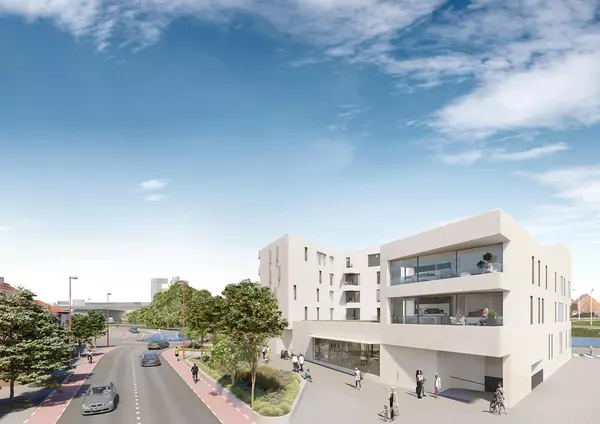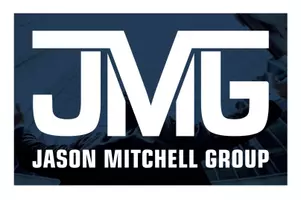Now practicing, Aztecs have to-do list before Nov. 4 season opener
It’s a good problem to have, but it’s still a problem.
Can a basketball team be too deep?
San Diego State returns seven players from last season … plus its best returning player from the season before … plus three talented transfers … plus two highly-touted freshmen. The veteran coaching staff remained intact. Offseason workouts intensified, nutritional habits changed, culture endured, expectations soared.
But with allowable preseason practice hours increasing this week and the Nov. 4 opener no longer a hazy image on the distant horizon, coach Brian Dutcher must come to terms with the reality of a roster that legitimately goes 13 deep.
He’s got six weeks, two exhibitions and 30 practices to figure it out.
“We’re very deep,” he said. “I don’t like being this deep because it’s not fair to the players. It’s great for the coaches, but it’s unfair to the players. When Magoon (Gwath) goes in the portal and (Miles) Byrd goes in the draft, I can’t sit there and wait to see if they’re coming back. I have to find players to replace them, where I feel like I can win if they don’t come back.
“We’ve added some really good pieces. And now when Byrd and Gwath come back, you’re deep and you’re talented. There will be guys who probably won’t get the minutes they deserve based on the depth and talent of this roster.”
Coaches always say that starting spots aren’t decided when preseason practice formally begins. They’re usually lying, with starters and rotation pieces penciled in.
Not this year. Privately ask different people around the program for a projected opening night lineup, and you’ll get vastly different answers. Byrd, who returns to SDSU despite being projected as an early second-round NBA Draft pick, is an easy choice. And Gwath, once he’s fully healthy. Beyond that, multiple players are already making strong cases for minutes, true freshman Elzie Harrington among them.
“It will be a fight all the way up until the opener,” Dutcher said. “This will be a case where the scrimmages mean something, every practice means something, then the exhibition games will give us a feel for who’s able to perform in front of a crowd against good competition. All those things will be important.
“I don’t want to get ahead of myself and say, with all this talent they’re going to win for sure. Talent doesn’t guarantee winning. Playing team basketball and playing the right way and playing together, that guarantees winning. So individually, yeah, we have a lot of talent. But can we put a team on the floor that will play well enough together to win games? That’s the key to everything.”
Here’s what else to watch between now and then:

1. Point guard
The Aztecs return 61% of their scoring, 69% of their rebounding and 61% of their minutes from last season, all prodigious numbers in an NIL-fueled era of free and frequent player movement.
Their returning minutes rank 20th nationally and second among projected top-50 teams behind only Purdue (at 70%).
It’s a deceiving stat, though. Much of that production came from a single player, point guard Nick Boyd, who had eligibility remaining but opted to spend it at Wisconsin (which spent an estimated $1.5 million to get him). Boyd led the Aztecs in points (13.4), assists (3.9), shots and minutes played per game.
That leaves a big void at point that will be filled with unfamiliarity: two newcomers (transfer Sean Newman Jr. and Harrington) and a sophomore who came off the bench mostly as an off-guard (Taj DeGourville). Not only that, they are a different breed of lead guard, less me and more we, more pass and less shoot.
Newman is the most experienced and most accomplished, in his fifth year of college basketball and ranking third in Division I in assists per game (7.9) at Louisiana Tech last season. DeGourville has worked hard on his handles over the summer. The 6-5 Harrington has shown a natural affinity to run the offense.
But there will be an adjustment period over these six weeks before the Nov. 4 opener. Earlier this week in practice, Newman drove the lane and, instead of shooting in traffic, fired a no-look pass to BJ Davis in the corner that went through his hands out of bounds. Hard to fully blame Davis, though, when that pass wasn’t always made last season.
Boyd didn’t have much offensive firepower around him and increasingly became a ball-dominant guard, particularly after Gwath went down injured in mid-February. Reese Dixon-Waters was out all season. Byrd’s effectiveness waned over the final six weeks. Davis wasn’t the same sharpshooter in March that he was in November.
Now they have more traditional point guards, with more weapons around them.
“We’re just trying to be more refined with what we’re doing, to use the experience, use the reads, get off things that aren’t there quicker, play with a higher IQ,” Dutcher said. “That just comes with experience, and it seems that we’re playing with a little higher IQ. We still go too fast, but the potential is there to be a pretty good offensive team.”

2.. The boards
If you come to practice, you’ll see a steady diet of rebounding drills. Box-out drills, tip drills, fighting through a tangle of pads for the ball drills. Anything, everything.
The good news, when it comes to preseason expectations, is that the bulk of the roster is back. The bad news, when it comes to the glass, is that the bulk of the roster is back from a team that struggled mightily on the offensive and defensive boards.
Here are the ugly stats: The Aztecs’ offensive rebounding rate was 29.2%, meaning they collected less than three in 10 of their own missed shots. That ranked 205th nationally, their worst in the last 13 seasons after ranking 71st and 82nd in the previous two.
It was even worse on the defensive end. Opponents grabbed 31% of their misses, which was 244th nationally – SDSU’s lowest in 20 seasons.
No single facet of the game will determine whether this is a good or great team.
Dutcher calls it “the big thing.”
“Defense and rebounding win champions,” he said after a recent practice. “We usually defend at a high level, but we have to rebound at a higher level than we did a year ago. … We rebounded the ball well at the offensive end today, which is a positive sign. But you’re going against yourselves, so at the defensive end we didn’t.
“Until you play other competition, you don’t really know. But rebounding will be a really pivotal part of what we do.”

3. Magoon Gwath
A big reason, literally and figuratively, for the soaring optimism this season is that you see the depth and talent on display through the summer and now fall, and then you see 7-foot redshirt sophomore Magoon Gwath still standing on the sideline in a knee brace.
“You just watch him shooting around on the side and playing around, and you get excited,” Dutcher said. “He’s out there shooting 3s and handling the ball. You just close your eyes and think, ‘This guy is going to be special.’ He’s got an NBA future, in my opinion. We’ll see if he gets there. Obviously, a lot of hard work has to go into it and good fortune, but he is an NBA talent.”
So when might he return?
It’s a two-part answer. One is when he’s cleared for live practice. The other is when he’s playing regular minutes in games.
The former is expected sometime in middle to late October, which is slightly ahead of his initial rehab schedule. His mobility has steadily increased since the late April surgery to repair damage to the posterior cruciate ligament in his right knee. It wasn’t a full reconstruction but an “augmented repair” to strengthen the ligament and accelerate recovery.
But going from practice to real games is less defined. He will have played once since the knee initially buckled at Utah State on Feb. 22, a rusty 24-minute performance a month later in the blowout loss against North Carolina in the NCAA Tournament’s First Four.
“I’ve already seen pretty much every defense,” Gwath said. “I just feel like it’s getting back up to speed and getting the feel back for the game. I don’t think it will take that long.”
The goal is to have him fully integrated by the Nov. 24 opener of the Players Era Festival against Michigan. It’s doubtful we’ll see him in the Oct. 17 exhibition against UCLA, giving him an Oct. 29 exhibition against USD and three home games against Long Beach State, Idaho State and Troy.
“We’ve got to make sure he’s in shape and his body’s responding,” Dutcher said. “We have to ease him back in. His body and how he hits the progression of where they want him will determine when he’s ready to play. If he’s not hitting his target numbers in terms of strength and return-to-play-type numbers, he won’t be out there right away.
“We know he’s going to be there eventually. We don’t want to rush him back. We know it’s a long season, and we want him at his absolute best when he comes back.”
Categories
Recent Posts










GET MORE INFORMATION


